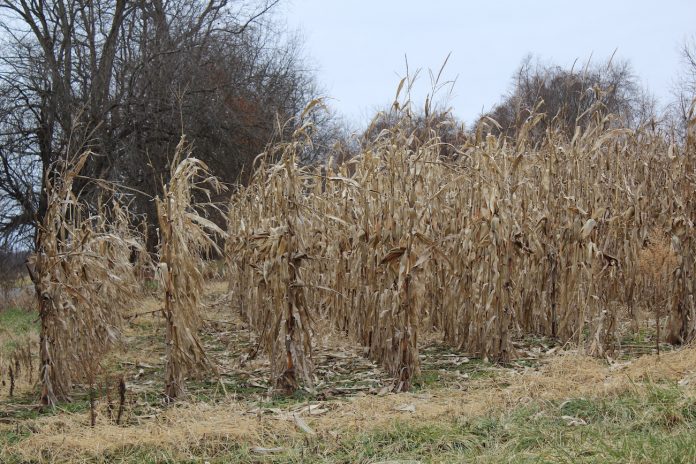
Conversation where traders, producers and end users gathered Dec. 8 was about recent market reaction. Last week, corn futures lost 13 cents and nearby (January) soybean futures lost 29 cents. As we watch this contra-seasonal rally, we have to wonder if we are seeing a correction, or did we just see the top?
Psychology
Any time the market makes a big move up, it tends to have a time when prices move modestly lower. There is a psychology to this, if you consider the different traders, especially the speculators. Maybe you are just long at the right time, and you stay with your long as the market goes higher, but without conviction.
It is easy to sell and take some profits, which influences the market to go lower if there are a lot of others like you. Maybe you were out of the market when the move came, and wish you could get in.
As the market moves lower on a retracement, you pick a price to get in, believing in the higher price and being grateful for the chance to buy at a lower level. This sets up a correction. The price drops, and then new buyers make it go higher again.
If, on the other hand, the market sustains a drop and continues lower, it spooks out the original longs and the ones who got in on what they hoped was a correction. This makes a correction into an actual trend reversal, and we look back at the recent high and say that was the top.
Even bigger correction
In the market Dec. 9, we had a sustained rally, with a week of, so far, correction. As this was written, the correction had extended for another two days. Looking at the highs, not the closes, we see what appears to be an even bigger correction.
March corn futures made a high of $4.391⁄2 on the last day of November, but are now trading $4.213⁄4, a drop of over 27 cents. January soybean futures made a $12 high Nov. 23, then highs of $11.98 and $11.99. However, we are now at $11.461⁄4, almost 54 cents off the high.
August changes
When a market makes a big move like this, we look back at what happened to get us here, and what might happen to make the move last, or make the move be over. A long list of negatives changed dramatically in August.
That month we saw a continued drought in the Central and Western Corn Belt that had producers and traders worried about the crop. The drought was especially bad in the state of Iowa, which then had the derecho. That was a straight-wind event that destroyed the corn in large areas. I will never forget being on the phone with a farmer in Iowa who had just had the insurance adjusters tell him to disk down what was left of his entire crop.
Then came unprecedented Chinese imports and import commitments. They were mostly for soybeans, but they bought large quantities of corn. They always buy soybeans. They almost never buy any amount of corn.
The corn came after an early-year revision of their supply, when they announced they had more on hand than anyone realized. The actual supply is a state secret, but the buying convinced traders in this country that they actually need the corn.
Outlook
So where do we go from here? There is much bullish enthusiasm in the soybean markets, but not so much in the corn. China has already bought over 84% of what U.S. Department of Agriculture predicted for the marketing year, which does not end until the end of August.
South America has production problems, and a late planted crop which may mean we will be the supplier of choice for an extra month. The market needs us to plant several million more acres of soybeans to maintain our supply. This would decrease corn plantings next spring, and presumably help corn prices.
So, correction or market top? Sell on the way up and don’t bet the farm on this market.












